Highlights of Fusion Science Studies in Japan

Osamu Motojima
Director General and Professor, The National Institute for Fusion Science, National Institutes of Natural Sciences
<Abstract>
An overview is given of fusion science studies in Japan, especially at the National Institute for Fusion Science (NIFS), an Inter University Research Institute belonging to the National Institutes of National Sciences (NINS). NIFS is a coordinating center of excellence for academic fusion research and carries out experiments on the Large Helical Device (LHD) as a national user facility.
Our research objective is clearly directed towards the realization of thermonuclear fusion energy for the development of a safe and environment-friendly energy source. It has been a long time dream of humans, since fusion research requires a broad and advanced level of science and technology integration. However, nowadays it has become a real target to be reached within 29 years due to an intensive research effort over several decades, after the achievement of the scientific demonstration of the break even condition of the plasma for Deuterium and Tritium fuels, which is called the Q=1 condition. There are clear targets of plasma parameters for this, n=1020m-3 (plasma density), T=10keV (temperature), Ñ=1sec (energy confinement time), and À=5% (ratio of plasma energy versus magnetic energy, an economic factor), which are the goals of global research in plasma physics and engineering. The LHD project is contributing to the scientific demonstration of the viability of fusion energy by producing the advanced level plasma parameters accessible to the break even condition. LHD is the world's largest superconducting device, which is a heliotron type, uniquely three dimensional, and net current-free toroidal magnetic confining device. In my talk, the current status of the LHD project is presented focusing on the experimental results and the recent achievements in plasma physics. Since its start in the year 1998, remarkable progress has presently resulted in the temperature of 10keV, the highest density of 1021m-3 with the internal diffusion barrier (IDB), and the highest steady average beta of 5% and the largest total input energy of 1.6 GJ during a 1 hour steady state discharge. The production of a super high density core (SDC) of more than the target of 1020m-3 is the result of the edge control study with the Local Island Divertor (LID) and multiple hydrogen pellet injection. The impurity density is kept low and the turbulence of the plasma is suppressed in the IDB zone due to the induced radial electric field and zonal flow. This makes it possible to formulate a new ignition scenario for the self burning fusion reactor, DEMO, with an extremely high density and lower temperature core. As for high À plasmas, they are stable enough to keep the energy confinement time scaling at the same level as that of low À plasmas.
The sun's power has lasted steadily and safely for about 5 billion years. Since most of the visible universe, more than 98%, is composed of plasmas and the energy source of stars is the fusion reaction, humans might be possible to obtain the understanding of the evolution of the cosmos through the study of plasmas. Therefore, there are infinite interests in our fusion science area; the high temperature plasmas confined in LHD and other devices provide great opportunities to establish the advanced knowledge of, e.g., physics events and their systematization, non-linear phenomena, non-local and nonequilibrium physics, complex system science, plasmas within an atomic nuclei, etc. One of the recent achievements in NIFS includes the experimental confirmation of the dynamo process, i.e., generation of the structured and meso-scale magnetic field by the microscopic turbulence. Now, we are involved in active international collaborations, especially with the U. S. A., contributing to the globalization of physics and engineering, and as a result contributing to the preservation of the global environment and global peace.
As is well known, the International Thermonuclear Experimental Reactor project (ITER) has finally started this year, 2006, which will be built in Cadarache in France. Since the Q value will be larger than 10, this is a big step for the fusion research lasting over the last half century, trying to tame nuclear fusion for the 6.5 Billion people on the earth. LHD will contribute to the ITER/DEMO oriented class of physics based on fusion science studies. There are still important subjects, which are the demonstration of steady state operation, the understanding of plasma wall interaction in a divertor, the achievement of high À, clarification of the role of radial electric field and suppression of plasma turbulence. Finally, a perspective is given on the ITER Broader Approach program as an integrated part of ITER and the Development of Fusion Energy Project Agreement.
<Biographical Note>
Present
|
|
Director-General, National Institute for Fusion Science
Executive Director, National Institutes of Natural Sciences,
Executive Board Member, National Institutes of Natural Sciences
|
Education
|
1971
|
Graduated from Kyoto University, Physics, Faculty of Science
|
| 1973 |
Graduated from Kyoto University, Master Course, Physics
|
| 1976 |
Graduated from Kyoto University, Doctor Course, Electrical Engineering, Ph. D,
|
Academic Career
|
1976
|
Research Associate, Kyoto University, Plasma Physics Laboratory
|
1980
|
Associate Professor, Kyoto University, Plasma Physics Laboratory
|
1987
|
Professor, Kyoto University, Plasma Physics Laboratory
|
1988
|
Professor, Nagoya University, Institute of Plasma Physics (Concurrent appointment)
|
1989
|
Professor, National Institute for Fusion Science
Director of Research Operations Division (up to March, 1999)
Director of Device Engineering Division (up to November, 1990)
|
1992
|
Professor, The Graduate University for Advanced Studies
|
1998
|
Director of the Large Helical Device Experiment Head Office (up to March, 2002)
|
1998
|
Scientific Adviser of Ministry of Education, Science and Culture
|
1999
|
Director of Department of the Large Helical Device
|
2002
|
Director of Device Engineering Division (Concurrent appointment)
|
2003
|
Director-General, National Institute for Fusion Science
|
2004
|
Director-General, National Institute for Fusion Science
Executive Director, National Institutes of Natural Sciences,
Executive Board Member, National Institutes of Natural Sciences
|
Academic awards
|
| May, 2001 |
Superconductivity Science and Technology Prize, "A research and development of the superconducting magnet system for the Large Helical Device as a steady-state fusion plasma experimental device,h Forum of Superconductivity Science and Technology, Society of Non-Traditional Technology.
|
| June, 2002 |
Alfven Award , gFrontiers in Fusion Research from the Japanese Perspective,hRoyal Institute for Technology, Alfven Laboratory, and Sweden.
|
| April, 2006 |
gScience and Technology Division, the Year 2006 Minister of the Ministry of Education, Culture, Sports, Science and Technology Awardh
|
|
|
Specialized field
Plasma Physics, Confinement of High Temperature Plasma and Control, Fusion Technology
Publication
gPlasma Physics in Picture,h (OSNOVA, 1993)
gDictionary for Plasma Physics and Related Engineeringh (Fusion Science Association, 2000)
gEnergy for Building the Future ? Challenge to Nuclear Fusion Power Generation?h(National Institute for Fusion Science, 2001)
|
|
The Present and Future of ITER
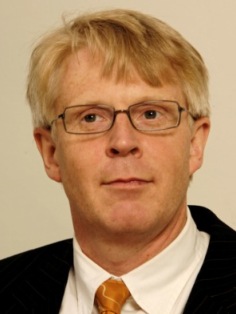
Norbert Holtkamp
Principal Deputy Director General, ITER Organization
<Abstract>
Since the set-up of the ITER top management during previous summer and the signature of the Joint ITER agreement on November 21, 2006 the ITER organization is in a rapid build up.
Starting from the existing design the seven parties under the leadership of the team in Cadarache in France, which is the chosen joint work site, started the site implantation and began construction.
With 90% of the components of ITER being contributed gin kindh, ITER is not only technically challenging but also a large scale experiment on the future of international collaborations and their ability to succeed.
The present status and future plans will be presented.
<Biographical Note>
Mr. Holtkamp has an M.S. equivalent degree in physics from the University of Berlin and a Ph.D. in physics from the Technical University in Darmstadt (both in Germany). His research interests include high-energy colliders, linear accelerators, storage rings, synchrotron radiation sources, and accelerator-based neutrino physics. He has served on a variety of review committees, dealing with technical, cost schedule and planning issues on Linear Colliders, Neutrino Factories and Neutrino beams, Synchrotron Radiation and XFEL designs as well as high energy colliders. More recently also Plasma Physics and Fusion Science. Mr. Holtkamp serves on several program and advisory boards and was a member of the last HEPAP subpanel on long-range planning in high-energy physics As well as the National Academy of Science panel on Elementary Particle Physics 2010. He chaired the Particle Accelerator Conference in 2005 and the Linac Conference in 2006. Until July 2006 Mr. Holtkamp was the director of the Accelerator Systems Division for Spallation Neutron Source at Oak Ridge National Laboratory, which is a Pulsed Neutron Source based on a 1 GeV H- linac and an accumulator ring that can provide between 1-3 MW of average beam power. The facility was under construction between 1999 and 2006. Before his assignment to SNS (1992-1998), Mr. Holtkamp was a senior staff member at DESY (Hamburg, Germany). In that position he was responsible for operation of the injector linacs and for a research and development program for a normal conducting linear collider (S-Band), which included the construction and operation of a 400 MeV electron test linac. After joining Fermilab (1998-2001), Mr. Holtkamp led a multi-laboratory study on the technical feasibility of an intense neutrino source based on a muon storage ring and was involved in the commissioning of the main injector at Fermilab.
Since April 1st 2006 Norbert Holtkamp is the Principle Deputy Director General Nominee of the ITER project located in Cadarache (France). He is responsible for the construction part of ITER and the technical coordination of a seven party collaboration building the worlds largest tokamak with a total value of approximately 5 Billion Euro.
|
J-PARC and International Linear Collider
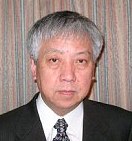
Masakazu Yoshioka
Professor of KEK, Inter-University Research Institute Corporation, J-PARC Project Office
<Abstract>
KEK is an international frontier research institute and has been producing many outstanding results. KEK is in a transition period for the next few years in research activities as follows;
- The J-PARC (Japan Proton Accelerator Research Complex) project at Tokai Campus, which is the joint KEK/JAEA project, will be completing construction of its accelerators in JFY 2008 and the commissioning of the physics program will start in JFY2009. The J-PARC will be the new place for researches on particles, nuclei, and material and life science. On the other hands, KEK 12 GeV Proton Synchrotron, which was the place for these activities, terminated its 30 years-long operation after producing tremendous fruitful results including K2K, long base-line neutrino oscillation experiment. All these activities will move from Tsukuba to Tokai campus in near future.
- Asymmetric energy electron-positron colliding-beam accelerator (KEKB) in Tsukuba Campus has been fully utilized since 1999, as a successor of TRISTAN project, taking an advantage of world highest luminosity of 1.7118 E34/cm2/s. The total integrated luminosity delivered for BELLE collaboration exceeds 700/fb. Recent highlight of the KEKB accelerator is the test run of the crab-crossing scheme using superconducting crab cavities. Now extensive studies and R&Ds are carried out for Super KEKB, which will be a successor of KEKB.
- In the same time, we start various R&D efforts for future research projects, such as International Linear Collider project (ILC) and the next synchrotron radiation project, Energy Recovery Linac (ERL), to stay on a leading role in worldwide researches. Extensive R&D efforts for ILC are organized under GDE and Asian-regional GDE collaborating with not only many institutes and universities in Japan and other countries but industries. Accelerator Test Facility, ATF, and Superconducting RF technology Test Facility, STF, are used and constructed as bases for the R&D works of ILC, respectively. The second phase of ATF, which is so called ATF2, is under construction with international scheme, which is a miniature of ILC scheme.
First, I will present about the J-PARC project, recent status of its accelerator construction, and technical issues to be overcome to achieve the goal. Then, I will introduce the recent R&D activities on ILC in Japan and Asian countries. Finally, I would like to mention briefly about the history of the accelerator science in Japan after the WWII, and how we should reproduce these activities in the next generation.
<Biographical Note>
Present
|
|
Professor of KEK, Inter-University Research Institute Corporation, J-PARC Project Office
|
Education
|
| 1965 - 1969 |
Undergraduate Student in the Faculty of Science, Kyoto University, Obtained B.Sc. |
| 1970 - 1975 |
Graduate Student in the Department of Physics, Faculty of Science, Kyoto University, Obtained Ph.D. for the systematic study of single pion photo-production in the resonance region (Thesis advisor; Professor Kozo Miyake)
|
Academic Career
|
| 1969 - 1970 |
Assistant at Kyoto College of Pharmacy |
| 1975 - 1976 |
Post-Doctoral Fellow at the High Energy Physics Laboratory, Kyoto University (Professor Kozo Miyakefs laboratory) |
| 1976 - 1989 |
Assistant at the Institute of Nuclear Study, University of Tokyo |
| 1978 - 1979 |
Guest researcher at Kernforschungszentrum, Karlsruhe, West Germany |
| 1989 - 1995 |
Assistant Professor at the KEK, Institute for High Energy Physics, Accelerator Laboratory |
| 1995 - 2004 |
Professor at the KEK, Institute for High Energy Physics, Accelerator Laboratory |
| 2004 - |
Professor at KEK, Inter-University Research Institute Corporation, J-PARC Project Office
KEK was renamed as KEK, Inter-University Research Institute Corporation since April 2004
|
I have worked out mostly for electron and positron colliding accelerators for 30 years such as PETRA, TRISTAN, KEK B-factory and linear collider R&Ds. Since April 2004, I moved from e+e- business to J-PARC accelerator construction as a technical coordinator. J-PARC is a proton accelerator, consisting of a 181 MeV linac, a rapid cycling (25 Hz) 3 GeV synchrotron (RCS) and slow cycling (0.3 Hz) 50 GeV synchrotron (MR). It is a multi-purpose facility for the material and life science using spallation neutron source, hadron and neutrino experiments using high-energy proton beam, which is extracted from MR.
The construction of J-PARC was started in JFY2001. The linac was already commissioned successfully in December last year. The RCS commissioning is scheduled in late September this year and the full machine commissioning will be in May, next year (11 months from now!).
The goal of J-PARC accelerator is to provide 1 MW, 3 GeV proton beam from RCS to the spallation neutron source, 750 kW beam with energy of 30~50 GeV from MR for hadron and long base-line neutrino experiments.
The performance of the accelerator will be limited by a space charge effect in the beam. The key issues to achieve the goal are to understand this effect, to develop reliable beam injection and extraction systems with extremely high efficiency and to develop maintenance technologies in the high-radioactivity environment. I have to concentrate all my efforts for these tasks to keep the tight schedule of the project.
|
|
SPring-8 and XFEL: Leading Facilities for the Photon Science Research in Japan
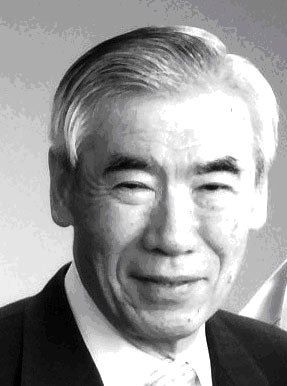
Hiromichi Kamitsubo
Japan Synchrotron Radiation Research Institute and RIKEN
<Abstract>
SPring-8, the worldfs largest 3rd generation X-ray storage ring, has been in routine operation after the commissioning in 1997. At that time only ten beamlines were commissioned and open to general users. After that, the number of beamlines increases from 10 to 49 and the number of users reaches to 5000 in 2006. The SPring-8 beamlines are categorized into four groups; public beamlines, contract beamlines, RIKEN beamlines and accelerator beam diagnostic beamlines. There are 25 public beamlines in operation; 22 X-ray beamlines, two soft X-ray beamlines, and one infrared beamline, and all of them are for public use under the management of JASRI. On the other hand, the RIKEN and contract beamlines are operated for exclusive use by RIKEN and by individual contractors, respectively.
SPring-8 consists of an injector linear accelerator, a booster synchrotron and a low-emittance storage ring. It has been constructed and improved along the following guideline for SPring-8 design, the keywords of which are following; (1) wider range of photon energy, (2) lower beam emittance, (3) better beam stability and (4) capabilities for future improvements. In the past ten years the performance of SPring-8 has been improved along the guideline and as the results SPring-8 becomes the leading facility for the photon science research. Details of the latest light source performance will be introduced in my talk.
In general, proposals of experiments at public beamlines are submitted to and reviewed by Proposal Review Committee (PRC) twice a year. However there are proposals on the priority research program under JASRI. It consists of three groups; priority field proposals, power user proposals and strategy proposals. In addition to those Budding Researches Proposals are also accepted to encourage graduate students to come up with innovative ideas. Categories of the proposals will be discussed in more details.
In my talk I will introduce state-of-the-art beamlines and to show results of researches by academic and industrial researchers as many as possible.
In 2001 RIKEN started the R&D program to develop the key components for the XFEL (X-ray free electron laser). Under this program an electron injector which generates low emittance and high peak-current electron beam, a precise beam position monitor and a stable support system for equipment. Then in 2004 and 2005, they constructed the gSCCS (SPring-8 Compact SASE Source) test acceleratorh to check the quality of developed hardware components, and to demonstrate SASE (Self Amplification of Spontaneous Emission) FEL at a soft X-ray wavelength. The SCCS consists of newly developed injector, a high gradient C-band accelerator and a short period in-vacuum undulator. In November 2005, the first spontaneous light was observed at the visible to 100 nm wavelength.
In parallel with SCCS construction the design work of the SASE XFEL was put forward and SASE XFEL project was proposed to the Government. The proposal was accepted and construction of X-ray FEL started in FY2006 on Harima Campus of RIKEN. It consists of low emittance injector, high-gradient 8 GeV C-band accelerator of 400m long and an undulator section of 80 m long. The FEL machine will be constructed next to the 1 km beamline of Spring-8 and XFEL operation is expected to start in 2010.
<Biographical Note>
Present
|
|
Vice Chairman, Japan Synchrotron Radiation Research Institute (JASRI)
Special Adviser, RIKEN (Institute of Physical and Chemical Research)
|
Education
|
| 1952 - 1956 |
Undergraduate Student in the Faculty of Science, the University of Tokyo, Obtained B.Sc. |
| 1956 - 1961 |
Graduate Student in the Institute of Solid State Physics, the University of Tokyo, Obtained Ph.D. (Thesis advisor; Prof. Kazuo Ohno)
|
Academic Career
|
| 1961 - 1965 |
Research Associate at the Institute of Solid State Physics (ISSP), the University of Tokyo (Prof. Ohnofs laboratory) |
| 1965 - 1971 |
Scientist, Cyclotron Laboratory, RIKEN (Institute of Physical and Chemical Research |
| 1971 - 1989 |
Chief Scientist, Cyclotron Laboraytory, RIKEN |
| 1976 - 1981 |
Professor, Institute for Nuclear Study, the University of Tokyo |
| 1988 - 1997 |
Director, JAERI-RIKEN Large-scale Synchrotron Radiation Facility Project
|
| 1992 - 1998 |
Executive Director, RIKEN
|
| 1998 - 2001 |
Vic President, Japan Synchrotron Radiation Research Institute (JASRI)
|
| 2001 - |
Vice Chairman, JASRI
|
| 2006 - |
Special Adviser, RIKEN
|
Academic awards
|
| 1999 |
A Purple Ribbon Medal (Japanese Government)
|
| 2002 |
Officier dans lfordre des Palmes academiq (France)
|
- 1960 - 1970Fexperimental studies on the polarization phenomena in nuclear reaction by using polarized neutrons (at ISSP) and deuterons (at Saclay)
- 1970 - 1980Fstudies on multi-nucleon transfer reactions induced by light heavy ions, by systematic measurements of cross sections and polarization
- 1975 - 1989Fdesign and construction of RIKEN separate sector cyclotron with K=500, the largest light and heavy-ion cyclotron in the world at that time
- 1985 - 1997Fdesign and construction of large-scale synchrotron radiation facility, SPring-8
|
|
Challenge in Science Policy
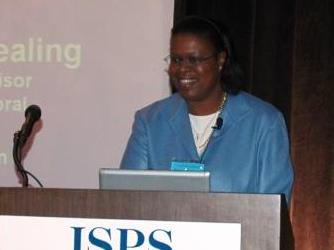
Kaye Husbands
Science Advisor for Science of Science Policy, National Science Foundation
<Abstract>
The presentation of Dr. Husbands will focus on The National Science Foundationfs Science of Science and Innovation Policy (SciSIP) activities. SciSIP develops the foundations of an evidence-based platform from which policymakers and researchers may assess the impacts of the nationfs scientific and engineering enterprise, and improve their understanding of its dynamics and predict outcomes. Specifically, data collection, research and community development components of SciSIPfs activities will: (1) improve and expand science metrics, datasets and analytical tools, yielding changes in the bi-annual science and engineering indicators and other data collections; (2) develop usable knowledge and theories of creative processes and their transformation into social and economic outcomes; and (3) develop a community of experts in this area across the Federal government, industry and universities. SciSIP will support the development of new data, models and tools, as well as facilitate transformative research on an immensely policy-relevant topic-the ecology of innovation.
<Biographical Note>
Present
|
|
Science Advisor for Science of Science Policy, National Science Foundation
William Brough Professor, Economics Department, Williams College
|
Education
|
| 1981 |
B.A. in Mathematics and Economics, University of Pennsylvania |
| 1990 |
Ph.D. in Economics, Harvard University
|
Academic Career
|
| 1989 - 1996 |
Assistant Professor, Economics Department, Williams College
|
| 1996 - 2002 |
Associate Professor, Economics Department, Williams College
|
| 2002 - 2003 |
Professor, Economics Department, Williams College
|
| 2003 - |
William Brough Professor, Economics Department, Williams College |
| 2005 - 2006 |
Program Director in Economics, National Science Foundation
|
| 2006 - |
Science Advisor for Science of Science Policy, National Science Foundation
|
|
Fields of Specialization
- Pricing Strategies in the Auto Industry
- Technology Transfer Diffusion and Innovation in Emerging markets
- Strategic Alliances between Customers and Suppliers
- Competitive Advantage of Mexican Auto Suppliers
|
|
Perspective of Science Policy in Japan
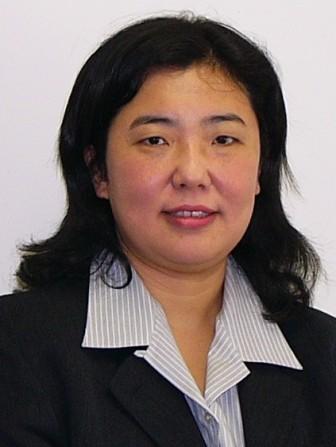
Maki KUBO
Director of Administration Department, JSPS
<Abstract>
The Japanese government clearly states its science policy in the 3rd S&T Basic Plan (FY2006-2010). This plan establishes the amount of around 25 trillion yen of the total government expenditure targeted for S&T investment over 5 years. Basic research, human resource development, and strategic international activity are raised as focal points, by specifically stipulating important prioritized fields (life sciences, IT, environmental sciences, nanotechnology and materials), strategic prioritized S&T activities, and key technology of national importance.
In terms of the issue surrounding universities, many programs aiming at reforming universities have been continuously created since converting national universities into independent entities in 2004. In this fiscal year, the Japanese government launched new programs called gGlobal COE Programh, gSupport Program for Improving Graduate School Educationh and gWorld Premier International Research Center Initiativeh. JSPS takes charge of the grant selection of these programs.
JSPS is implementing several focal points based on this S&T Basic Plan, including promotion of basic research (Grants-in-Aid for Scientific Research), nurturing younger researchers (fellowship programs), and promotion of international exchanges. The future direction of JSPS operation will also be touched upon.
<Biographical Note>
Present
|
|
Director of Administration Department, Japan Society for the Promotion of Science (JSPS)
|
Education
|
| 1982 |
Bachelor of Law, University of Tokyo
|
| Professional Career |
| 1982-1995 |
Ministry of Education, Science, Sports and Culture (MESSC)
|
| 1995-1998 |
Deputy Director of Life Long Education Department, Chiba-City Board of Education |
| 1998-2001 |
Press Officer, MESSC
|
| 2001-2002 |
Director of Statistics Planning Division, Ministry of Education, Culture, Sports, Science and Technology (MEXT)
|
| 2002-2003 |
National Science Foundation (fellow)
|
| 2003-2004 |
Director of Gender Equality Promotion Division, Cabinet Office
|
| 2004- |
Director of Administration Department, JSPS
|
Academic Career
|
| 2001-2002 |
Lecturer at Yokohama City University
|
| 2006-2007 |
Visiting Professor of Science Policy at Osaka University
|
|
As a Japanfs core funding agency, JSPS carries out a broad program of activities to contribute to the advancement of research. As director of Administration Department, she is in charge of not only science policy planning and budget, but also research fellowship programs for young scientists. Prior to joining JSPS, she had over 20-year career in MESSC and MEXT.
|
|
|
|
|
|
|